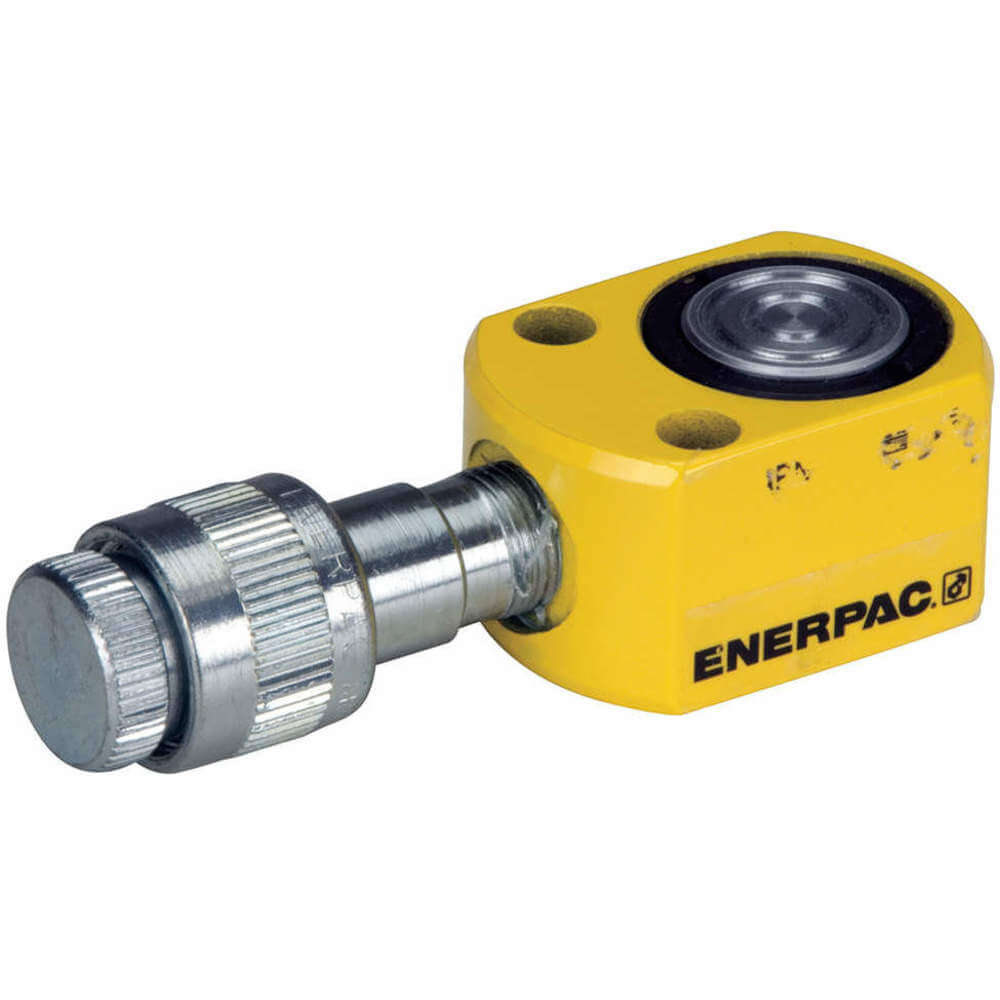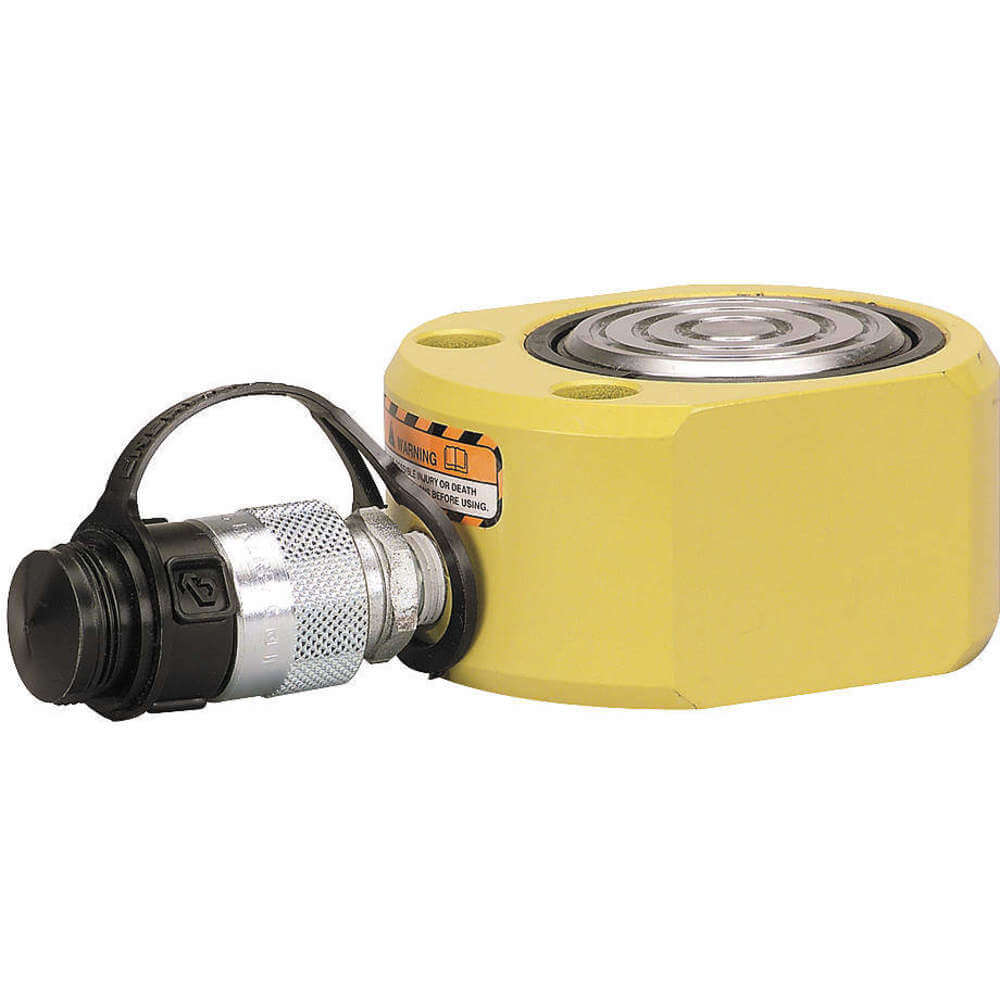Enerpac RSM-50 Flat-Jac single-acting hydraulic cylinder utilises hydraulic pressure to exert force in one direction. It includes a cylinder body, piston, cylinder rod, hydraulic fluid and seals. This Flat-Jac hydraulic cylinder is used for lifting heavy loads, pushing / pulling objects and providing support in construction, maintenance and assembly operations.
Working Mechanism:
- Connect the hydraulic pump to the cylinder using appropriate fittings and hoses.
- Ensure the hydraulic fluid level in the pump is sufficient and the pump is in proper working condition.
- Attach the cylinder to the load or object that requires lifting or movement, ensuring secure and stable connections.
- Activate the hydraulic pump to apply pressure, allowing the cylinder to extend and perform the desired action.
- Monitor the operation closely and adjust the pressure as necessary for precise control.
- Once the desired action is completed, release the pressure from the hydraulic pump.
- Carefully disconnect the cylinder from the load and store it in a clean and dry environment.
Features:
- Enerpac RSM-50 single-acting hydraulic cylinder has baked enamel finish for superior corrosion resistance.
- It offers precise control, high lifting capacity and easy installation due to its compact size.
- This Flat-Jac cylinder has chrome-plated steel plungers to convert the energy from the pressurised fluid into linear mechanical force.
- It comes with mounting holes for easy installation.
Compatible Accessories:
- Enerpac RSM50K Repair Kit: This kit contains all of the tools required to repair the cylinder on the go.
Frequently Asked Questions:
Q. What safety precautions should I follow while using this Enerpac RSM-50 hydraulic cylinder?
A. Safety precautions include wearing appropriate personal protective equipment, ensuring secure connections and following proper lifting and load-bearing guidelines.
Q. How should I store this cylinder when not in use?
A. The cylinder should be stored in a clean, dry and protected environment to prevent damage and contamination.
Q. What should I do if the cylinder fails to extend or retract?
A. Check for any obstructions or binding in the load path, ensure proper hydraulic fluid levels and inspect seals for damage.
 Change Country
Change Country


